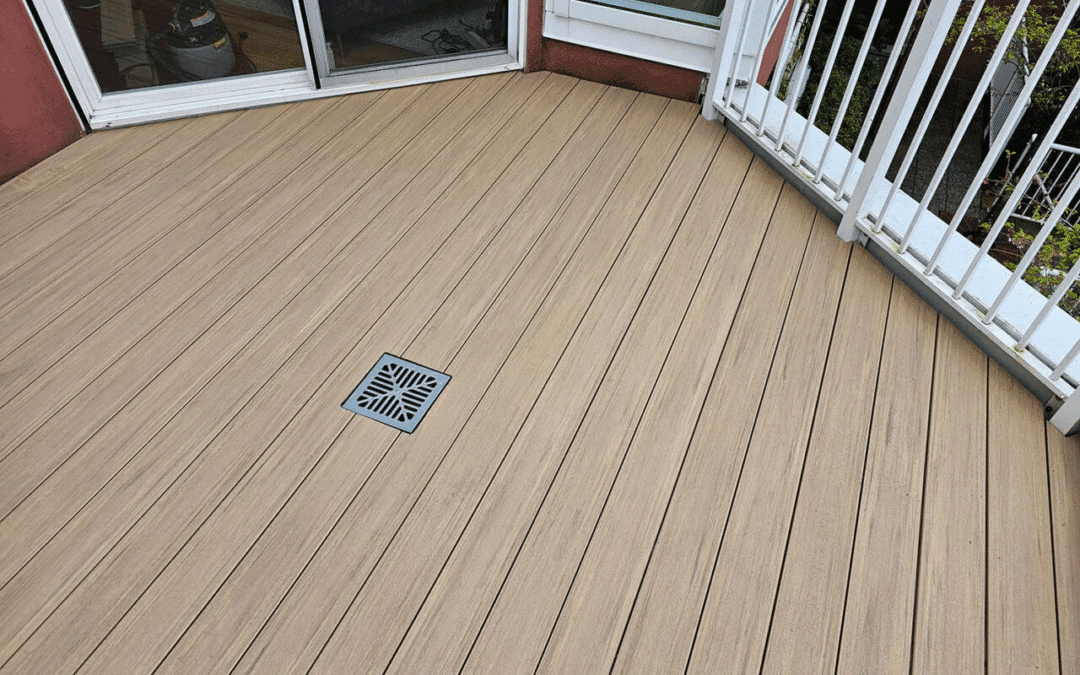Introduction
Outdoor living spaces are an important part of modern homes. Patios, balconies, and decks expand usable living space and allow families to enjoy the outdoors in comfort. But when it comes to choosing a durable and reliable deck surface, homeowners often ask: Is vinyl decking waterproof?
The short answer is yes waterproof vinyl decking is designed to provide a seamless, protective layer that prevents water infiltration. In this guide, we’ll cover how vinyl decking works, its benefits, and important considerations for installation and maintenance. If you’re exploring decking options, this resource will help you understand whether a vinyl deck covering is right for your home.
What is Vinyl Decking?
Vinyl decking is a PVC (polyvinyl chloride) membrane applied to outdoor surfaces such as decks, patios, and balconies. Unlike traditional wood decking, which requires frequent sealing and staining, vinyl provides a low-maintenance solution that also protects the underlying structure from water damage.
How Vinyl Decking Works
- A waterproof vinyl sheet membrane is heat-welded at the seams.
- The continuous surface prevents water from seeping through.
- It is installed directly over plywood or concrete, creating a strong barrier.
- The finish is slip-resistant, UV-resistant, and available in various colors and textures.
By acting as both a finished surface and a waterproofing layer, vinyl decking offers dual functionality that other deck coverings often cannot match.
Benefits of Waterproof Vinyl Decking
1. Waterproof Protection
The biggest advantage is water resistance. Unlike wood, which absorbs moisture, vinyl membranes create a complete seal that prevents leaks into the structure below.
2. Low Maintenance
Homeowners in rainy climates appreciate vinyl’s easy upkeep. A simple wash with mild soap and water keeps the deck looking fresh, without sanding, staining, or sealing.
3. Durability
High-quality vinyl deck coverings are engineered to withstand UV rays, mold, mildew, and heavy foot traffic. With proper installation, a vinyl deck can last decades.
4. Safety
Vinyl decking surfaces are slip-resistant, making them safer for families, especially around pools or in regions with frequent rainfall.
5. Aesthetic Options
Vinyl membranes come in a variety of patterns and colors, including wood grain finishes, allowing homeowners to match their outdoor space with their design preferences.
Common Applications of Vinyl Deck Coverings
Vinyl decking is not limited to backyard decks. It’s used in many outdoor spaces, including:
- Balconies – Especially useful for apartment and condo complexes.
- Rooftop decks – Provides a waterproof barrier for living spaces below.
- Patios – Enhances outdoor areas while preventing moisture damage.
- Pool surrounds – Adds slip resistance and waterproofing in wet zones.
Vinyl Decking vs Other Decking Options
| Feature | Vinyl Decking | Wood Decking | Composite Decking |
| Waterproof | Yes | No (requires sealing) | No (resists rot but not waterproof) |
| Maintenance | Low | High | Moderate |
| Lifespan | 20–30 years | 10–15 years | 15–25 years |
| Slip Resistance | Yes | Varies | Moderate |
| Aesthetic Options | High (colors/textures) | Natural look only | Limited patterns |
Is Vinyl Decking Truly Waterproof?
Yes. Unlike wood or composite boards that allow water to pass between gaps, waterproof vinyl decking forms a continuous, sealed surface. This ensures that no water penetrates into the substructure. For homes with living spaces or storage areas below the deck, vinyl makes an excellent choice.
However, waterproof performance depends on professional installation. Poorly welded seams or improper preparation can reduce effectiveness. That’s why working with experts, such as Premier Sundecks, ensures long-lasting results.
Maintenance Tips for Vinyl Decks
Although vinyl is low maintenance, following a few practices will help extend its lifespan:
Regular Cleaning
- Use a garden hose or pressure washer (on low setting) to remove dirt.
- Clean with mild soap, avoiding harsh chemicals that may damage the surface.
Prevent Damage
- Use protective pads under furniture legs.
- Avoid dragging heavy items across the deck.
- Promptly clean spills to avoid staining.
Seasonal Care
- Check seams and edges annually.
- Clear leaves and debris to prevent mold.
- In winter, use non-abrasive tools for snow removal.
Cost Considerations of Vinyl Decking
The cost of installing a vinyl deck depends on several factors:
- Size of deck – Larger areas increase material and labor costs.
- Surface preparation – Old decking may need removal before installation.
- Design choices – Premium patterns or textures cost more.
On average, vinyl deck covering installation ranges from $7–$12 per square foot in most regions. While this may be higher upfront than wood, long-term savings on maintenance and repairs make vinyl cost-effective.
Environmental Considerations
Vinyl decking has environmental trade-offs. On the one hand, it reduces the need for chemical sealants and stains. On the other hand, PVC production requires energy and resources. Choosing high-quality, long-lasting vinyl reduces waste by extending the lifespan of the deck.
Conclusion
So, is vinyl decking waterproof? Absolutely. With its sealed, continuous surface, a vinyl deck covering provides both durability and protection from water infiltration. For homeowners looking for low-maintenance, long-lasting solutions, waterproof vinyl decking is a smart choice.
If you’re considering a vinyl deck for your outdoor space, contact Premier Sundecks for expert advice and professional installation.

